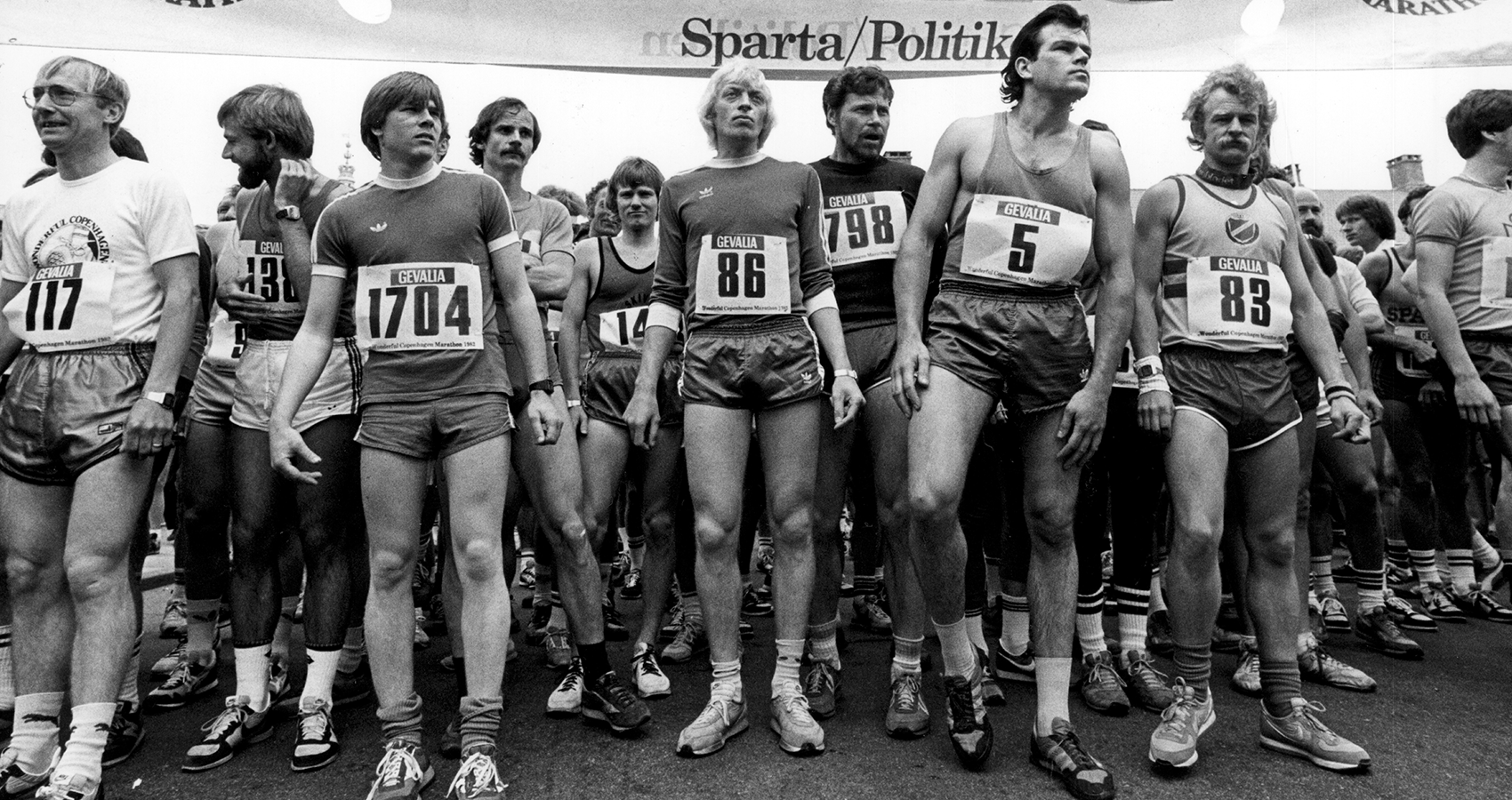
About Copenhagen Marathon
For 44 years Copenhagen has been the home for our marathon

Marathon pioneers ran in the streets of Copenhagen for the first time in 1980

Pure willpower
The popular running with a lively atmosphere and plenty of spectators cheering the thousands of marathon runners through the streets of Copenhagen and Frederiksberg, is something completely different than what it was the first many years.
Of course there were spectators, but there was no finishing straight as today. There were no power zones, DJs, cheerleaders, screaming spectators or other entertainment, to boost the runners’ motivation when it got tough.
As more there wasn’t near the same number of participants in the first pioneering years. Just pure will power and toughness to get you through the many kilometers.
Niels Jørgen Holdt, who has been involved in organising the Copenhagen Marathon since the start, explains: “Back in 1980, when we got the idea for the first version of the Copenhagen Marathon, marathon runners were perceived as oddballs, and it was only the family who was out cheering them on. Today it is a huge popular festival filled with entertainment that involves the whole city.”
When it all started
– the runners had to run in and out between cars, because the course weren’t completely closed off.

Volkswagens and Ladas drove side by side with the marathon field in the beginning of the 80s.

There was only 995 participants at the first Copenhagen Marathon and only 47 of those were women.

The first female winner of the first edition of the Copenhagen Marathon was Lone Dybdahl.

A digital update
Much has changed since the capital first laid asphalt – or rather cobblestones – to the first marathon runners.
Rebranding in 2023
In 2023 the Copenhagen Marathon had a major rebranding. The new Copenhagen Marathon brand is made to portray who we are and that we are on a journey together with the runners. Our brand shall help portray Copenhagen as a modern and global capital and metropol where runners run, live and breathe in and out.

From blue to yellow.

A logo inspired by running legs.

From Copenhagen Marathon to Runner’s Habitat.